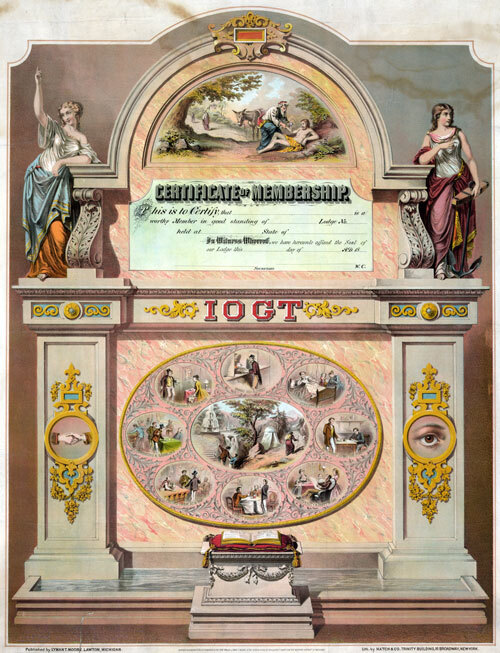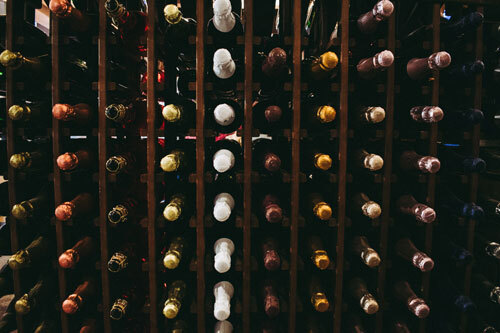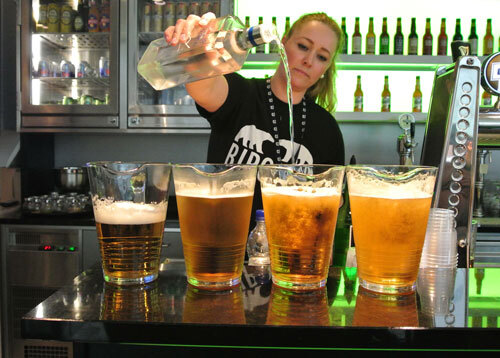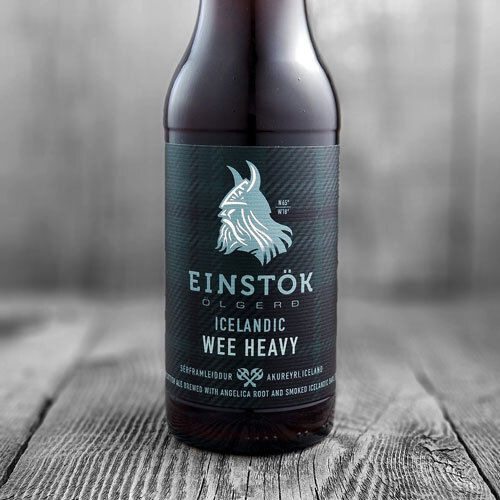Today in Tedium: Of all the things that can get you through this weird time in our lives, one of the most obvious is beer. Beer is a beverage that should be had in moderation, of course, but these are not moderate times, so it’s understandable if you find yourself enjoying your virtual happy hours more than usual. But what if your country prohibited beer—specifically, beer, not wine or liquor? How would that change things? This is not a theoretical situation. For nearly 75 years, you could not get a full-alcohol beer in Iceland, despite most other kinds of alcohol largely being legal most of that time. What gives? Today’s Tedium takes a trip to Iceland to discuss the bizarre prohibition of beer that ended way later than it should have. — Ernie @ Tedium
Keep Us Moving! Tedium takes a lot of time to work on and snark wise about. If you want to help us out, we have a Patreon page where you can donate. Keep the issues coming!
We accept advertising, too! Check out this page to learn more.
1909
The year Iceland passed a law banning the sale of alcohol of all kinds in the country. The law, based on a referendum of Icelandic citizens who had the right to vote at the time, had a lengthy grace period, and fully took effect in 1915. The country was one of the first European nations to undertake prohibition, and the prohibition lasted far longer than nearly any other part of the world, especially in the case of beer, which only became legalized again in 1989. (Fun fact: Something else that was banned from 1909 to 1989 in Iceland? The importation of dogs.)

A (fairly ornate) 19th-century membership certificate to the International Organisation of Good Templars. The organization’s Icelandic arm played a key role in the rise of Prohibition in the country. (Wikimedia Commons)
How an American movement to ban alcohol took hold in Iceland and other European countries
Throughout the 19th century, a widespread political movement crossed the Western world in different forms, starting largely in the then-young United States but crossing the ocean into parts of Europe in the middle of the century, particularly in the United Kingdom, Ireland, and throughout Scandinavia.
The United States temperance movement would, of course, become a key part of American society and lead to the passage of what became a highly unpopular federal amendment that was eventually repealed.
But temperance, as a concept, went viral in many parts of the world where religion played a role and alcoholism was seen as something of a public nuisance. And if it got a hold on a society, the idea during this period was tough to shake.
No better example of the influence of the temperance movement, and the related teetotaler movement, existed than inside Iceland, a country that had a small, largely white population that nearly universally followed Lutheranism. With a total population of below 100,000 people, a social movement could move across the entire country fairly quickly, and while Iceland had shown signs favoring temperance during the 19th century—leading to restrictions on sale and taxes on imported beverages—it was only during the early part of the 20th century where the temperance movement gained popular appeal.
Icelandic culture had an interesting relationship with alcohol, in large part because of its natural isolation before the 20th century. (We’re talking about one of the northernmost countries in the world, after all.) Alcohol was once scarce in the country, generally only consumed during special events such as weddings or funerals, and because of its natural advantages for storage, many Icelanders favored distilled beverages over drinks such as beer.
But alcohol, often brought to the country on ships, became a problem, leading to a temperance movement in Iceland, as reflected by the Icelandic Temperance Society in 1842. But it came in fits and starts—that society, for example, allowed members to drink wine as used in religious ceremonies, along with domestic beer. Early on, the movement was informal, a suggestion for society, rather than a hard-and-fast rule.
But eventually, a movement came to Iceland that gave temperance political legs. In the 2000 book Alcoholics Anonymous in Iceland: From Marginality to Mainstream Culture, author Hildigunnur Ólafsdóttir explains how the law that barred alcohol in Iceland was rooted in the popular success of the Good Templar movement, which was started in the U.S. in 1851, but imported into Iceland by a Norwegian shoemaker who immigrated into the country in the mid-1880s.
Here’s how the movement gained momentum, per Ólafsdóttir:
The Good Templars movement was organized in small groups with selected officers and meetings rituals. Organizational skills and meeting technique learned from participation in these activities became an important experience for many members. The first labour unions benefited greatly from the experiences many of their members had gained in the Good Templars’ lodges. Relationship to other societal institutions such as the Church of Iceland was close. The first temperance societies received support from the Church, which endorsed teetotalism.
The Good Templars’ main arguments for Prohibition were that the elimination of alcohol would free the nation from centuries of poverty and humiliation. The Good Templars were of the opinion that drinking could not be controlled unless production, import and sale of all alcohol were stopped. Prohibition was considered an instrument to raise moral standards and improve the economy. The union’s spokesmen were well aware that in order to achieve their purpose they had to have the support of the majority of population. Besides, they had to influence the opinions of the politicians.
The movement quickly took over the country’s social movements, with more than 8 percent of Icelanders members of the movement by the first decade of the 20th century, according to Ólafsdóttir. According, alcohol consumption dropped sharply in Iceland.
By the time prohibition took effect in 1915, alcohol had become a relative rarity in Icelandic culture.

Spain saw Iceland’s prohibition and decided that couldn’t be, so they forced them to import Spanish wine. (Amy Chen/Unsplash)
How Spain broke Iceland’s attempts to ban alcohol outright
Almost immediately, problems with Iceland’s plans to cut off alcohol emerged, however, and not because people were bending the rules however they saw fit.
The main issue was trade. Given that Iceland is a country that relies on imports for many of the goods it needs, and—given its location, surrounded by the North Atlantic and Arctic Oceans—its massive fishing industry was often a key export.
And one of its main trade partners was Spain, with which a trade agreement expired soon after the end of World War I. As a part of a new agreement, the country wanted Iceland to import its wine—a bit of a problem for a teetotaler country.
In a 1921 article on the issue written for the U.S. Anti-Saloon League’s official newspaper The American Issue, an Icelandic contributor named Th. Thorvardsson argued that the push by Spain seemed to be a blatant attempt to weaken what was seen as a successful prohibition of alcohol:
On the part of Spain, the demand does not appear to be made with a view to obtain any economic advantage from Iceland. She is well aware that, as already stated, had only dealings with us are that we have bought salt from her and she salt fish from us. She suffered no loss by our Prohibition. We imported no alcoholic drinks from Spain before the Prohibition act came into force; and there is no probability that we shall do so even if the act be repealed. Her demand appears to be made solely with a view to initiating a campaign against the principle of Prohibition.
But despite the efforts to win political support abroad, the trade decision ultimately fell in Spain’s favor in 1922, and Iceland began importing Spanish wine, and selling it in a limited monopolistic form. Just seven years after the law took effect, its integrity had been completely shot by an important trade partner.
The unusual situation—where a larger country had essentially bullied Iceland into taking its alcohol—was destabilizing enough to the law that it was reconsidered.
In fact, prohibition as a concept was being reconsidered entirely around the world. Despite the best efforts of each country that had banned it, there was no easy way to control access, a key factor behind the speakeasy phenomenon in the U.S. And countries near Iceland, such as Finland and Norway, had ended their experiments with prohibition in failure.
Iceland looked like it was going to go the same way, according to Ólafsdóttir, and political changes were a big part of the reason why.
In 1908, when the Icelandic government polled eligible voters on prohibition, the voter pool was much smaller and far less diverse, thanks to the fact that women couldn’t vote at the time and the minimum voting age was 25. By the late 1920s, the tide had shifted the other way—with women’s suffrage a success and the voting age lowered to 21.
As far as alcohol policy, Spain’s import call proved the guiding star for Iceland.
“The exception from Prohibition made for the Spanish wines became an important deviation from the prevailing policy,” Ólafsdóttir wrote. “The Spanish wines never became particularly popular, and they only increased the officially recorded alcohol consumption slightly. But they were the first sign that Prohibition would not last forever.”
For most beverages, that certainly was the case. But beer became the exception, strangely.
1918
The year that Iceland and Denmark signed an agreement that involved Denmark recognizing the island as a fully independent state, albeit with support from the Denmark, which (although smaller in land size) has a larger population. The agreement lasted until 1944, when, during a time Denmark had been occupied by Nazi Germany, Iceland declared independence. Previously, Iceland had been considered a separate kingdom within Denmark, and before that, a part of Norway.

Some examples of Brennivín bottles. Not introduced until after prohibition of spirits ended in the country, it became the country’s iconic spirit of choice. (Kenn Wilson/Flickr)
Why was most beer banned in Iceland, but not liquor or wine?
The decision to allow Spanish wine in Iceland, even though it was highly regulated, had the eventual effect of causing the entire law to be reconsidered, and as it did nearly three decades prior, the issue went up for referendum. And because of changes in the demographics of people who could vote, the results basically flip-flopped entirely, with 58 percent of the country supporting a repeal of Prohibition—a number that hit 71.6 percent in the country’s capital and largest city, Reykjavik.
But despite the widespread support from residents for repeal, in the country’s parliament, an unusual argument took hold, one that made the case that, much like marijuana is seen by some in the United States, beer was a gateway drug to stronger types of alcohol. The logic was far from bulletproof—they were, of course, legalizing the stronger types of alcohol at the time this argument gained favor—but it was the argument that won over political figures of the era.
Essentially, to ensure the rest of prohibition was ended in Iceland at the time, given the power of the country’s temperance lobby, beer was sacrificed. And as Iceland was seen as a spirits country first, hard alcohol was seen as more culturally relevant to the country than beer.
As Ólafsdóttir’s book noted of the 1935 law that lifted the ban on spirits: “Alcohol consumption was so closely linked to the consumption of strong spirits that when a ban on them was lifted it was considered as a repeal of the Prohibition.”
So, what can we make of this unusual bit of law-making? In a 1986 paper in the Law & Society Review, authors Helgi Gunnlaugsson and John F. Galliher make the case that the decision to ban beer in Iceland was an example of “symbolic politics”—that is, a policy that was put into place to represent a point of view in Icelandic political culture that was prevalent, despite the fact that the law itself was ineffective at its primary goal.

Even today, a popular Icelandic drink involves mixing hard alcohol, usually Brennivín, with near beer, which topped out at 2.5 percent alcohol by volume. (James Brooks/Flickr)
Near-beer was common in Iceland, and was frequently spiked with harder beverages—a common variant involved putting a shot of Brennivín, an unsweetened schnapps unique to the country, into the glass. And home-brewing was totally possible, with no regulations on how strong a home-brewed beverage could be.
That point of view driving the ban was multiple things, really—the political influence of rural Icelanders, who held outsize power in the country’s parliament despite most of the country’s population living in the largest cities; the political influence of a temperance movement that still held some weight even as its political goals faltered; and a lingering bias toward the working class.
And then there’s the cultural consideration as to why this happened. As the BBC notes, Denmark was largely considered a beer-drinking country, and Iceland wanted its own lane … especially considering Iceland would eventually separate from Denmark entirely. Conveniently, the ban gave Iceland just that.
Of these, the rural association might have been the strongest reason for the ban sticking around as long as it did. As Gunnlaugsson and Galliher explain, the movement against prohibition largely weakened because the balance of power in Iceland in rural areas began to falter:
Like the “child savers” and prohibitionists in early twentieth-century America, the opponents of beer in Iceland have continued to base their opposition to this substance for almost 60 years on its dreaded effects upon workers and young people, the workers of the future. Even though economic stratification and class conflict have not been pronounced in Iceland, one might get the impression that they were from the seemingly paternalistic references to the workers’ special weaknesses and needs. In Iceland, however, even the representatives of labor unions and the socialist parties have repeatedly emphasized the weakness of the workers, the very people they represent, apparently because of Icelanders’ “Viking blood.” This has given an unexpected strength to the last vestiges of Icelandic prohibition. In contrast to the unions, the representatives of the urban middle classes have always seen beer and other alcohol as simply commodities to be exploited for the income they can generate for industry, employment, and tax revenues for the state.
Rural Icelanders are losing their numerical strength, just as rural American Protestants did earlier. Yet rural Icelanders maintain some sense of power through the law in an unrepresentative parliament, and, in the instance of beer prohibition, they have had the support of the political parties of the workers and unions. Beer prohibition is thus a means of demonstrating rural domination in the face of population odds attendant to the rapid changes that have occurred in Iceland’s economic and social system. Such a protracted conflict in Icelandic politics has obscured class, or material, interests because during most of this century there has been only the most rudimentary class system in the country. Since economic stratification developed much later in Iceland compared with other Western democracies, in the past its parliament has been easily deflected from material issues to status conflicts. Industrialization likewise came later than in other Western countries, and developed much more rapidly due to the influence of these other nations. The rural domination of parliament, its beer prohibition, and the contemporary prohibitionist sentiment of labor unions are dramatic reflections of the resulting cultural lag.
Compare this to other political debates where people in rural areas held outsize influence over the way a country was run (U.S. presidential elections, anyone?), and you can very easily see the parallels.
But cultural shifts would eventually lead to the law’s demise, nearly three quarters of a century after it was first put in effect and 60 years after the law was given an unusual specificity. It took a number of tries, though,
The first sign things were about to change came in late 1979, when, in a memorable incident, alcohol industry executive Davíð Scheving Thorsteinsson protested the law by purchasing beer at the airport, which airline crews could buy without regulation and, as he went through customs, arguing that he was being discriminated against due to his job.
Thorsteinsson lost his case, but won the hearts of beer-drinkers throughout Iceland as the publicity around the case put another crack in a policy that was proving untenable. Soon, Icelanders coming in from abroad were able to bring some beer home with them from the duty-free store.

Víking Beer, which has corporate roots that date to the era immediately after prohibition of spirits ended, is the Budweiser of Iceland, with a market share well above any other brand. (Nora Morgan/Flickr)
And in May of 1988, after decades of attempts by legislators to remove the regulation on beer, the temperance movement that had made beer a public enemy in Iceland saw its symbolic legislation finally fall, as attempts to filibuster the controversial measure finally failed to hold it back.
The next year, after a grace period that allowed bars and the country’s government-run liquor stores to stock up, beer officially came back to Iceland in March of 1989, where it’s been ever since.
“This is a turning point in Icelandic cultural history,” said Hortur Gudnason, the president of Iceland’s Beerlovers Association, in a 1989 UPI article. “I had a symbolic celebration this morning, but will be getting down to the real thing tonight.”
Over the past three decades, beer has found a place in Icelandic life once again, and exports of Icelandic beer have become common as well.

A legit Icelandic craft beer worth writing home about.
I traveled to Iceland nearly a decade ago and learned of this unusual piece of information way back when … and was reminded of it when I recently had a chance to try Einstök’s Icelandic Wee Heavy Scottish Ale, a beer that, for various reasons, may be the closest Iceland has to a cultural match on the beer front—it’s a beverage that speaks to the country’s Viking roots just like those bad arguments about “Viking blood” did back in the day, and reflects a long-ago time when said Vikings invaded Scotland.
It makes sense that a Scottish Ale is probably the best match, culturally, for an Icelandic beer. After all, this is a country that spent most of the past century trying to prevent people from drinking beer.
Whether it was national pride or good lobbying, Iceland’s alcoholic legacy is just as weird as its tendency toward fermented shark meat, a delicacy frequently enjoyed with Brennivín. Skip the hákarl.
--
Find this one an interesting read? Share it with a pal! See ya next week!






